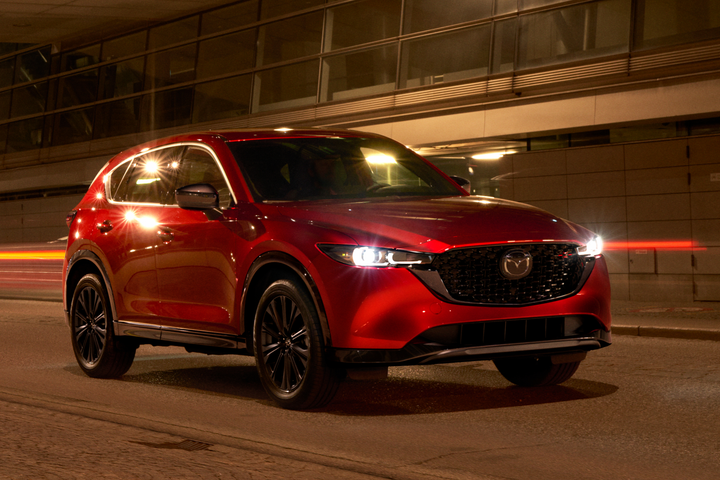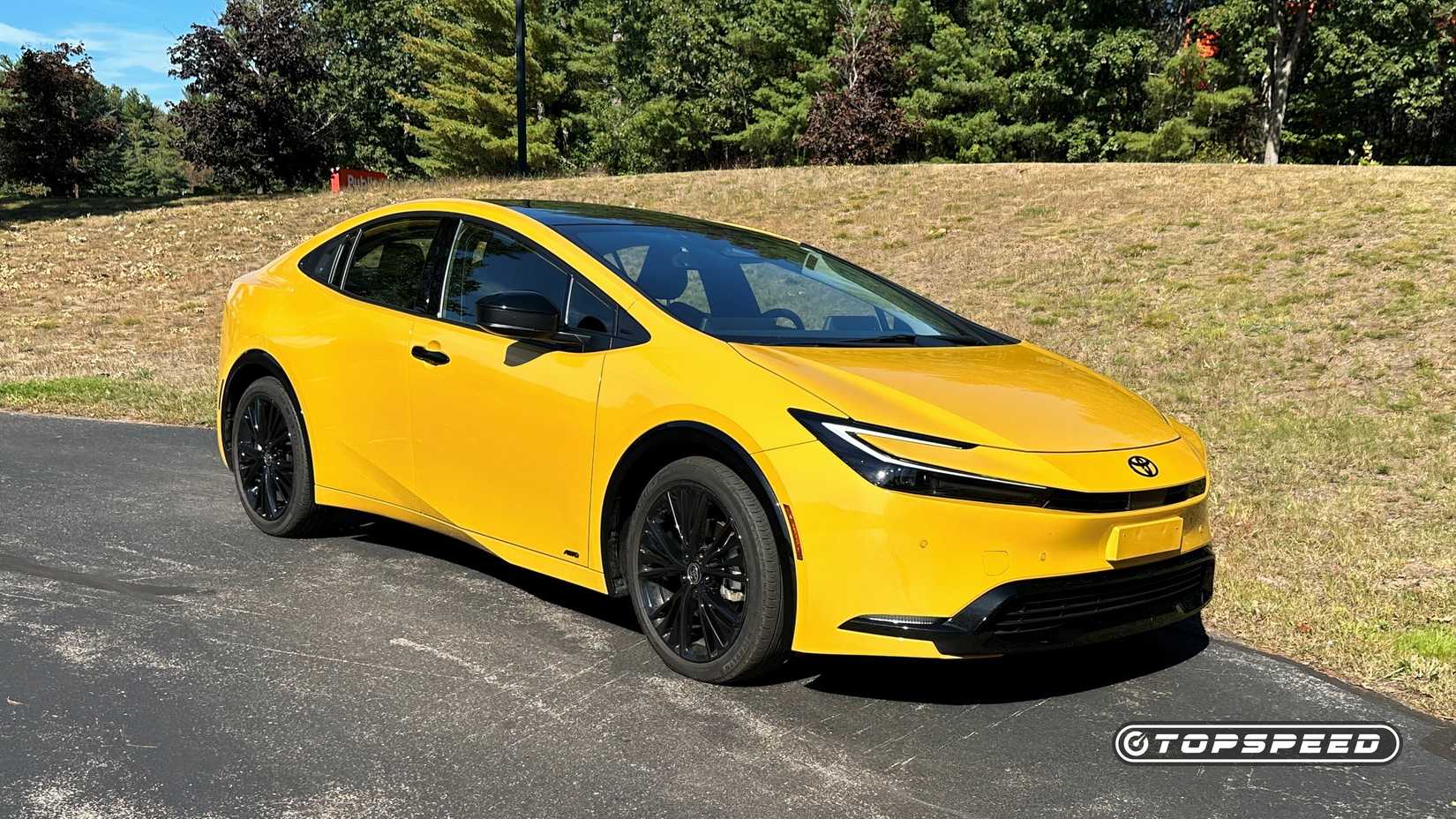Americans like to think we have the most diverse car market on earth. And we have had that—until now. In what other nation could you shop for both an Alfa Romeo and a Mitsubishi?
That was then. The combined pressures of inflation and tariffs may crush smaller carmakers, particularly Subaru, Mazda, and Mitsubishi. Even Toyota, Lexus, and Nissan are not immune.
Why? Because 15 percent tariffs on Japanese cars are easily the difference between profitability and a too-costly hit to the bottom line. And a few models from every maker simply have too many Japanese parts—and sell in such small volumes—to justify continued sales in the U.S.
Here’s a list of our five favorite—and likely threatened—Japanese cars that are still for sale at the moment. But they may not be by this time next year.
In order to provide you with the most accurate reporting, we’ve consulted with market expert Sam Fiorani, of Auto Forecast Solutions, and have based car content production and parts mix according to the National Highway Transportation Association’s American Automotive Labeling Act database.
Mazda CX-5
Our own William Clavey says everything you might want to know about why the CX-5 is such a glorious small crossover. Go read the whole dang love letter, but here’s the money quote:
“…boy does it drive wonderfully…It’s tight, nimble, urgent, fun to drive, and while its automatic transmission has fewer gears than most vehicles in this class, it responds in the same lightning-quick reaction times as some high-end dual-clutch units.”
Unfortunately, the CX-5 is assembled in Japan and uses 90 percent Japanese parts. Sam Fiorani, of research group Auto Forecast Solutions, points out that even though a new CX-5 is on the way, “There are no plans to produce it in the U.S., and no plant is available to locate production domestically.” More than a quarter of all U.S. Mazdas sold last year were CX-5s, which puts Mazda in a serious bind. Toyota and Mazda share production at an Alabama assembly plant to make the CX-50 and Corolla Cross. Fiorani says Mazda could increase output of the CX-50, which, combined with the Mexican-assembled CX-30, may help offset reduced sales of the CX-5.


- Base Trim Engine
-
SKYACTIV-G 2.5L ICE
- Base Trim Transmission
-
SKYACTIV-Drive 6-speed automatic
- Base Trim Drivetrain
-
All-Wheel Drive
- Base Trim Horsepower
-
187 HP @6000 RPM
- Base Trim Torque
-
186 lb.-ft. @ 4000 RPM
- Base Trim Fuel Economy (city/highway/combined)
-
23/29/25 MPG
- Base Trim Battery Type
-
Lead acid battery
- Make
-
Mazda
- Model
-
CX-5
Another Threatened Mazda: The Mazda3
The Mazda3 is beloved by pretty much anyone at TopSpeed who’s driven the sporty hatchback. The car looks splendid and is a blast. Plus, you can get yours with a manual-shift transmission, an increasing rarity. Or in the words of our own Brian Anderson:
“The base model Mazda3, in either sedan or hatchback, is a $25,000 ride that delivers a smooth ride, tons of standard features, and a great, unique design.”
Even as Anderson points out, the Mazda3 isn’t getting a big price jump for 2026, Fiorani raises the warning flag for continued U.S. sales. Mazda makes some of these cars in Japan, and some in Mexico, with the latter seeing 65 percent Mexican parts. Mazda probably cannot afford to lose the 40,000 annual Mazda3 sales in the U.S., so Fiorani sees the carmaker figuring out how to use more U.S. parts in the Mexican-made vehicle.
Toyota GR86/Subaru BRZ
We gave the BRZ tS our coveted Sports Car of the Year label at the start of the year. William Clavey’s money quote on the sub-$40,000 2+2 sports car says pretty much all you need to know:
“On a tight, winding back road, I’m not interested in an overpowered supercar. What I want is nimble, responsive, and entertaining. I want to feel like a hero while obeying the speed limit. The BRZ is the back-to-basics sports car that does all that.”
I even ventured that you might want the slushbox GR86 instead. And I think Toyota’s decision to perhaps shoehorn in the GR Corolla’s three-cylinder instead of the boxer four would be a great upgrade. By the way, one of our readers penned this in response to the notion of going auto-box:
“Grow a nutsack, would you…. An AT in a sports car is NEVER the way to go. A BRZ\86 is only enjoyable with a manual transmission. They really are not fast and have zero torque. The only fun factor they have is a manual to clutch kick it sideways and chirp a couple gears.”
Noted, sir!
Meanwhile, there isn’t a soul in the TopSpeed pantheon who would argue that Toyota/Subaru haven’t absolutely crushed the handling fun of the BRZ/GR86. It’s light, nimble, and smile-a-nanosecond playful. But Fiorani says that both models sell in low volumes for their respective brands. Toyota averages about 11,000 GR86 sales each year, but Subaru’s BRZ sales were off 20 percent this past year at a meager 3,345 cars. The BRZ/GR86 is made jointly in Japan, with 85 percent Japanese content, further endangering the cars’ survival.
Another Threatened Subaru: The WRX… And Possibly The Impreza
Fiorani said Subaru’s limited U.S. capacity is going to stress its model mix. The Impreza, which is fairly affordable, could be axed because Subaru sells six Indiana-assembled Crosstreks for every single Impreza. And to make more capacity for the Crosstrek, had to shift production of the Impreza back to Japan. Meanwhile, the WRX is also built on the Impreza platform and is also made of 80 percent Japanese content. Subaru sold 18,587 WRXs last year, which is 6X vs. BRZ. So it’s fairly obvious that Subaru might kill the BRZ to save the WRX.
Toyota Prius vs. Toyota Corolla Hybrid
The Prius is 100 percent Japanese assembled. We love the new Prius and think it’s a superb upgrade over the prior ugly duckling, but the Toyota Corolla Hybrid outsells the Prius by 56 percent. Fiorani notes that Toyota has the flexibility to make more Corolla hybrids in the U.S.—and kill off the Prius. Consider that Toyota sold 32,000 Prius cars last year; and 205,000 Camrys; and 208,356 hybrid RAV4s, all made in the U.S. Toyota can afford to kill the Prius in the U.S., and likely buyers won’t even notice, because almost everything Toyota sells comes as a hybrid, too.
Nissan Z
Nissan sold 3,164 Zs last year, barely edging out sales of the Toyota Supra. But the Z is assembled in Japan with almost entirely Japanese parts. Listen, I love the Z, and have praised the car as a superb value. At $42,970, the base car still fits that remit. But as my colleague, William Clavey, has noted, the Nissan Z Nismo is now scraping $65,750. Clavey notes the pain, and what you might purchase instead:
“Enter Nismo territory, and you’re knocking at the door of BMW M2 pricing, with a starting MSRP of $65,750 ($77,198 CAD). Yikes!
Which is why Fiorani thinks Nissan might kill the Z in the U.S. market. It would hurt Nissan at a time when its brand is already suffering, and they have just axed the slow-selling Ariya. But Nissan’s bleeding red. They need to make hard choices, and this might be one of them, sad as we’d be to see the Z go.
Saved For Now?
The beloved Mazda MX-5 Miata and Toyota’s GR Corolla could both be threatened. Mazda’s flagship is still the Miata, despite low sales (and 85 percent Japanese content). So it’s unlikely Mazda can risk killing its iconic convertible. Fiorani says that the GR Corolla could be produced in the U.S., because Toyota already makes the base Corolla here. And Toyota will make more GR Corollas in the U.K., and because of lower tariffs (10 percent on a maximum of 100,000 cars), that production could supplement what they sell into the U.S. currently.
It’s likely Toyota wants to keep either the GR86 or the GR Corolla, so I’d bet they don’t kill either, but a lot depends on the U.S. economy, too.
TopSpeed’s Take
Fiorani points out that businesses like consistent policies. The recent raid on a Hyundai plant in Georgia raises the specter of foreign carmakers pulling back on investment in the U.S., which is just the opposite of what tariffs were meant to compel. Constant policy shifts and ICE raids are just the opposite. This isn’t about the merit of that particular case; it’s about a policy choice that was meant to curry investment here. Now, Korean manufacturers (and other carmakers) have a choice to make about continuing many billions of dollars of commitment that could also lead to thousands of American jobs staying or leaving our shores.
Then there’s the second part of that: consumers. With fewer cars on U.S. lots and fewer model options, prices will increase. Fiorani calls it a “lose-lose” situation.
“Raising the costs of doing business with these countries will eliminate the choices provided to U.S. buyers when manufacturers cannot make the business case for local production or increased prices.”—Sam Fiorani, V.P. Global Vehicle Forecasting AutoForecast Solutions LLC
If there’s a silver lining, it’s that consumer demand has a funny way of changing policy. When we want something, and we make that known, capitalism has a way of sorting out the policy mess. And if we want GR Corollas or Mazda3s, and we think our current policies are dumb, politicians eventually get the message. Eventually.









